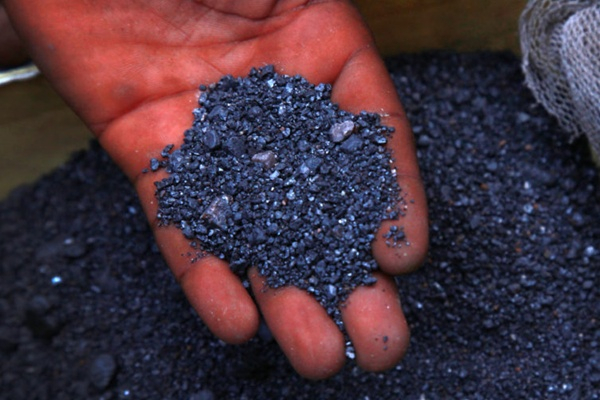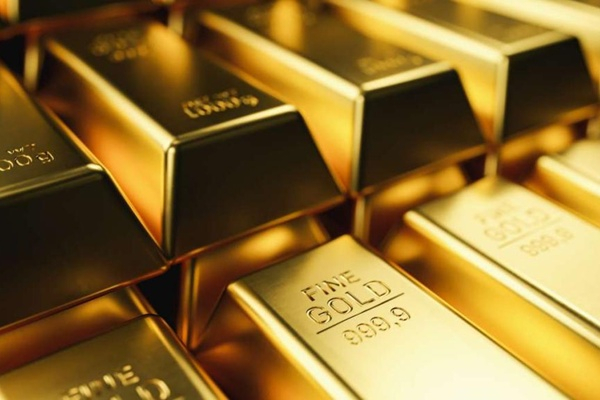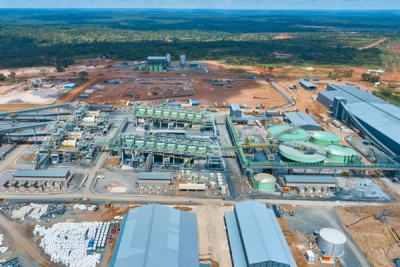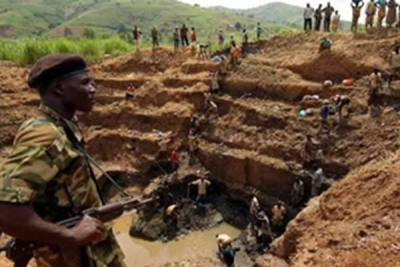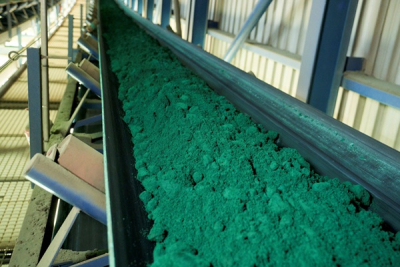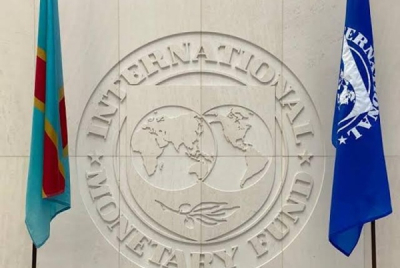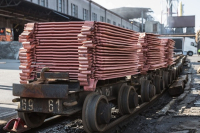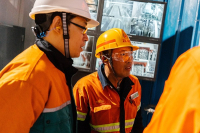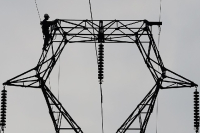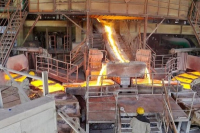
MINING (157)
Mining sites in Masisi and Kalehe, respectively in North and South Kivu, have been classified as "red" zones, according to an order signed by Mines Minister Kizito Pakabomba on February 12, 2025. This designation affects 38 mining concessions, particularly in the Rubaya and Nyabibwe sectors, where coltan and tin ore (cassiterite) are extracted.
"The exploitation and illicit trade in minerals organized by the aggressors establish an illegal supply chain," Pakabomba stated. "Considering that these illegal supply chains constitute the main source of financing for this war of aggression, it is necessary for the government of the Democratic Republic of Congo to reconsider the status of certain miners."
Through the move, the Congolese government likely hopes to cut off funding sources for the M23 rebels and their Rwandan supporters. The new decree forbids mining in these "red" zones. This means minerals mined in these areas can no longer be sold legally.
The "red" designation will remain in effect for six months, during which the affected sites may undergo independent audits initiated by the Ministry of Mines or international organizations such as the UN or OECD.
M3 Rebels Gain Territory
Since M3 rebels and their Rwandan allies launched their assault in the eastern Democratic Republic of Congo (DRC) on January 23, the Congolese side has reported over 3,000 casualties (and as many injured). The rebels already took over Goma and Bukavu, the respective capitals of North and South Kivu.
Last December, the United Nations (UN) published a report revealing that M23 rebels have been controlling the DRC’s Rubaya mine since late April 2024. The mine is "the largest coltan mine in the Great Lakes region," accounting for approximately 15% of global coltan production.
According to the UN report, at least 150 tons of coltan were smuggled each month from Rubaya to Rwanda, where it is mixed with local production, “leading to the most significant contamination of mineral supply chains across the Great Lakes region”.
This article was initially published in French by Emiliano Tossou
Edited in English by Ola Schad Akinocho
The Kibali gold mine in the Democratic Republic of Congo (DRC) produced 686,000 ounces in 2024, down from 763,000 ounces in 2023, thus down 10% year-on-year. Barrick Gold, the Canadian from which co-owns the mine, disclosed the figure on February 12, 2025.
Kibali thus fell short of the forecast of its owners for 2024. Indeed, Barrick Gold and its main partner, AngloGold Ashanti, had projected the mine’s output at 711,000 to 800,000 ounces. Barrick’s expectations were based on a 4% increase in the first half of 2024.
However, in H2 2024, the mine’s output dropped by 21% year-on-year. While Barrick has not officially explained this underperformance, AngloGold Ashanti attributed the third-quarter drop to lower gold grades in the processed ore.
This year, Barrick expects its attributable gold production to stand between 310,000 and 340,000 ounces, against 320,000 to 360,000 ounces anticipated in 2024. Bankable estimates that Kibali will produce between 688,000 and 755,000 ounces in 2025, down from its output in 2023.
Barrick and AngloGold each hold a 45% stake in Kibali.
Emiliano Tossou
On January 24, 2025, Ivanhoe Mines, a major mining operator in the Democratic Republic of Congo (DRC), successfully raised $750 million on international markets, exceeding its initial $600 million target. The funds come as Rwanda-backed M23 rebels escalate hostilities in eastern DRC.
The funds are repayable over five years at a 7.875% interest rate. Though steep compared to global benchmarks, this rate undercuts borrowing costs for many Africa-focused firms. Investors could have been deterred by the ongoing security crisis in the East, especially since the recent operation is partly guaranteed by Kipushi Holdings, one of Ivanhoe’s subsidiaries in DRC.
Several factors could explain the successful fundraising, including the strong demand for zinc and copper, which Ivanhoe extracts in DRC. Also, Copper futures on the London Metal Exchange (LME) have climbed steadily, reflecting tightening global supply chains. Another reason is that Ivanhoe and its subsidiaries have a good borrowing track record.
The funds raised will primarily fuel Ivanhoe’s ambitious expansion at its Kamoa-Kakula copper complex, where 2025 investments are projected between $1.42 billion and $1.67 billion. By contrast, the Kipushi zinc mine—now operational after a $185 million overhaul—is forecast to receive only $25 million for capacity upgrades.
This marks Ivanhoe’s latest in a series of strategic financings. In 2023, Rawbank extended an $80 million loan (since repaid), while FirstBank’s Congolese unit provided $50 million due in May 2025. Last summer, Trafigura Asie and CITIC Group (Ivanhoe’s largest shareholder, with a 22% stake) contributed $60 million via prepayment deals tied to future mineral output.
It remains to be seen what will happen to the value of the shares in the recent $750 million loan, listed on several European and American stock exchanges. In early January, Ivanhoe tempered shareholder enthusiasm by announcing lower-than-expected copper production forecasts, while raising its capital expenditure forecasts compared with estimates made three months earlier. Its communication to investors, scheduled for the close of trading on February 19, will hence be closely scrutinized.
This article was initially published in French by Georges Auréole Bamba
Edited in English by Ola Schad Akinocho
The M23 rebel group is consolidating its control over several mining towns in the eastern Democratic Republic of Congo (DRC). After taking over Rubaya in North Kivu, the rebels have also seized Lumbishi, a mining town in South Kivu, according to reports from residents and the territory's administrator. Rubaya hosts an artisanal coltan mine, which accounts for up to 15% of global production. Lumbishi is located in a resource-rich area abundant in coltan, gold, tourmaline, and cassiterite.
"This military advance is accompanied by efforts to establish a parallel civilian administration in M23-controlled areas, as well as an intensification of mining," notes the Washington-based Africa Center for Strategic Studies (ACSS). Several experts, including UN experts, warn that the M3 group is exacerbating the illicit mineral trade in the DRC, further hindering efforts to formalize artisanal mining practices in the country.
Another driver
To ensure responsible artisanal mining of gold in the country, the DRC government set up a company to buy, sell, and export this gold. Formerly Primera Gold, the firm was rebranded as DRC Gold Trading SA after coming under public control. In 2023, it operated solely in South Kivu, collecting up to 5.07 tonnes of gold and boosting the country's artisanal exports by an astonishing 12,000% year-on-year. However, the M23's increasing presence in this province is likely to disrupt the company’s activities.
The DRC’s vast wealth in critical minerals is one of the drivers of the conflict, and, according to a note from the Center for Strategic Studies of Africa published on January 29, it“will need to be addressed if a comprehensive peace is to be achieved”. “Rwanda, in particular, is alleged to be facilitating the illicit mining and trafficking of these minerals. The market value for these minerals is likely to exceed over $1 billion,” the note adds.
Depuis @MiningIndaba à Cape Town, nous dénonçons avec force le pillage de nos ressources minérales par le Rwanda, qui mène une agression inacceptable contre notre pays🇨🇩 @MinMinesRDC pic.twitter.com/hKTlElABiG
— Kizito Pakabomba (@kizpaka) February 2, 2025
Cited by Reuters, Jason Stearns, a political scientist at Simon Fraser University and former UN investigator, highlighted that Rwanda's mineral exports now exceed $1 billion annually—roughly double what they were two years ago—with a significant portion believed to originate from the DRC. The Congolese government firmly asserts Rwanda's involvement in the plundering of its resources. Kisiti Pakabomba, Minister of Mines, reiterated this point at the Mining Indaba forum currently taking place in South Africa.
In February 2024, Rwanda and the European Union signed a memorandum of understanding aimed at ensuring a "sustainable supply of raw materials" for the EU in exchange for funding to develop Rwanda's mining supply chains and infrastructure. This agreement has since been criticized by the DRC and some Members of the European Parliament (MEPs), who view it as complicit with ongoing resource exploitation in the region.
This article was initially published in French by Pierre Mukoko
Edited in English by Ola Schad Akinocho
The Democratic Republic of Congo (DRC) has exported 145,452 tonnes of cobalt in the first nine months of 2024, averaging 48,484 tonnes per quarter. The figures were disclosed by the Congolese Ministry of Mines. Annual exports could reach 193,936 tonnes, surpassing last 2023's record of 152,798 tonnes.
According to the data, CMOC, a Chinese firm, has dominated cobalt exports from the DRC over the period reviewed, thanks to its operations at the Kisanfu and Tenke Fungurume (TFM) mines. CMOC exported 50,021 tonnes from the two mines over the period. Glencore followed with around 32,000 tonnes exported from the MUMI and KCC mines. The Swiss firm became the world’s second-largest cobalt exporter in 2023; it was the first before that year.
The Ministry of Mines has not disclosed the revenues generated from these record sales, making it difficult to determine whether the increase in export volumes has compensated for declining cobalt prices. The cobalt market has been in surplus for the past three years, leading to a significant price drop. On the London Metal Exchange, cobalt prices fell from around $50,000 per tonne in January 2023 to approximately $24,000 per tonne in January 2025.
Cobalt: Price evolution since 2023
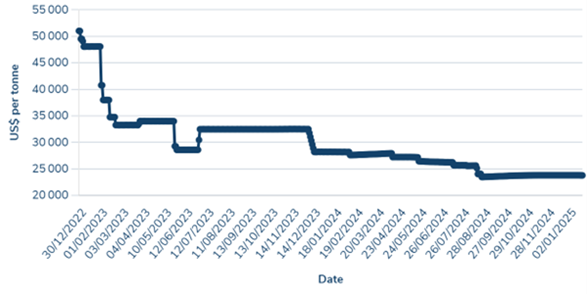
This surplus can be partly attributed to increased Congolese cobalt exports linked to CMOC's expanded production capacity over the past two years. CMOC's cobalt production surged more than fivefold since 2022, reaching 114,165 tonnes in 2024. According to the Cobalt Institute, the DRC is expected to account for 48% of global cobalt supply growth by 2030, compared to 37% for Indonesia.
This article was initially published in French by Emiliano Tossou (Ecofin Agency)
Edited in English by Ola Schad Akinocho
On January 15, 2025, the International Monetary Fund (IMF) Executive Board approved a new program with the Democratic Republic of Congo (DRC), following a service-level agreement reached in November.
The 38-month program has two main components: the Extended Credit Facility (ECF) worth $1.729 billion and the Resilience and Sustainability Facility (RSF) with $1.038 billion. Although these amounts are slightly lower than initially announced, the program’s goals have not changed: enhancing the country's macroeconomic stability, improving governance, and increasing resilience to climate challenges.
The ECF is designed to stabilize the economy, improve governance, and promote inclusive growth. Meanwhile, the RSF will support the DRC’s climate adaptation efforts, helping the country reduce its greenhouse gas emissions by 21% by 2030.
In 2024, the DRC achieved solid economic performance, with GDP growth projected at 6%, a significant drop in inflation, and reduced budget deficits, despite exceptional expenditures related to security and the fight against the Mpox epidemic.
The Central African nation also faced major climate-related disasters, including devastating floods that affected over 300,000 households, destroyed buildings, and killed 300 people. The crisis has exacerbated health risks and affected agricultural production. It called for urgent humanitarian responses and more funds to boost climate resilience.
According to IMF Deputy Managing Director, Kenji Okamura, while the DRC has shown resilience in the face of crises, sustained efforts are crucial to consolidate economic and social gains, combat corruption, and address climate challenges.
The previous IMF program concluded in 2021 helped strengthen foreign exchange reserves and boost growth, but structural and climatic challenges persist.
Under the ECF, the IMF champions reforms to help the DRC increase tax revenue, improve public financial management, and depend less on mining revenues. As for the RSF, it focuses on achieving climate objectives, such as forest preservation and sustainable natural resource management.
Despite risks from ongoing conflicts and health crises, the IMF’s outlook for 2025 remains positive, with growth forecast at 5.1% and inflation projected at 7%.
This article was initially published in French by Charlène N’dimon
Edited in English by Ola Schad Akinocho
The Democratic Republic of Congo (DRC) has exported 2.35 million tonnes of copper in the first nine months of 2024. The figure, featured in a report issued on 30 December 2024 by the Ministry of Mines, is up 17% year-on-year. Based on this performance, the report’s authors estimated that the country’s exports for 2024 could stand at 3 million tonnes, thus setting a new record–at the national and continental levels.
According to the Ecofin Agency, a pan-African economic media, since June 2023, the DRC has exported over 750,000 tonnes of copper, on average, quarterly. The Central African country exported more than 800,000 tonnes in Q3 2024, Ecofin reports.
While the Ministry of Mines only releases sales figures without specifying whether exports include volumes from previous years, data from the Central Bank of Congo indicates little difference between production and sales.
Still, the DRC will remain the world's second-largest copper producer in 2024, ahead of Peru which produced 2.47 million tonnes between January and November, down 1.1% year-on-year. Chile kept its crown, with over 5 million tonnes produced last year.
The increased copper output substantially impacts the local economy, as the mineral accounts for more than two-thirds of Congolese exports and a significant portion of mining revenues, estimated at $5 billion for the 2025 budget.
This article was initially published in French by Emiliano Tossou (Ecofin Agency)
Edited in English by Ola Schad Akinocho
China's dominant presence in the Democratic Republic of Congo’s mining industry poses a “risk” to the African economy. Marcellin Paluku, Deputy Cabinet Director at the Ministry of Mines, made the claim yesterday, January 14, in an interview with Reuters.
“Today, 80% of our mines are with a single partner (China). So it's a risk [...] You never know what might happen. That's why we're now trying to diversify our partnerships, to avoid depending on a single partner,” Paluku declared, on the sidelines of a mining conference in Riyadh.
Further commenting on the DRC’s partnership diversification efforts, Paluku said the Congolese government was eager to negotiate with potential new investors, such as Saudi Arabia, India, and the European Union. However, he did not indicate at what stage these talks were. Regardless, his words match those of Kizito Pakabomba, the DRC’s Mining Minister. In October 2024, Pakabomba said the country sought to “attract better investors, more investors, and diversified investors.” At the time, he had mentioned the United Arab Emirates as a potential partner.
China's influence in the DRC's mining sector is evident in its ownership of major cobalt mines, such as those held by China Molybdenum Company (CMOC), and its significant stake in the Kamoa-Kakula copper mine through Zijin Mining.
The DRC is the world's leading producer of cobalt and the second-largest producer of copper, making it a focal point for international competition due to the strategic importance of these minerals in the energy transition and advanced technologies. The country's mineral wealth extends beyond copper and cobalt. The Congolese soil hosts other key minerals like zinc, 3T ores, diamonds, gold, uranium, and germanium.
This article was initially published in French by Aurel Sèdjro Houenou (Ecofin Agency)
Edited in French by Ola Schad Akinocho
Ivanhoe Mines is considering importing hydropower from Angola to ensure optimal operations at the Kamoa-Kakula copper complex in the Democratic Republic of Congo (DRC). The Canadian company operates the complex and is one of its shareholders (39.6%), alongside Zijin Mining Group (39.6%), Crystal River (0.8%), and the Congolese state (20%).
Ivanhoe claims it could start importing the electricity by 2030, via a 2,000 MW high-voltage transmission line. The facility, yet to be built, would transport power from northern Angola to the Copperbelt in the DRC and Zambia.
The project is being developed by Trafigura and ProMarks, which signed a Memorandum of Understanding with the Angolan government in July 2024 to study the project's technical and economic viability. The developers plan to form a joint venture to develop, finance, build, and run the line.
"The project should be financed through a combination of equity and debt. Planning, approvals and construction would take approximately four years after the final investment decision," Ivanhoe Mines indicated.
According to the Canadian operator, the Kamoa-Kakula complex requires about 240 MW to operate at full capacity (phase I, II, III, and the smelter). However, it currently uses 90 MW of domestic and imported hydroelectricity and has 160 MW of backup capacity from diesel generators. Due to insufficient electricity, the company is considering postponing the launch of the complex’s new copper smelter by three months. The smelter was initially set to start operations in March 2025.
Ivanhoe Mines has been seeking to tackle the issue by increasing its supply capacity, focusing on green electricity, which is cheaper and less polluting. It is also looking for internal and external solutions.
For example, the company counts on the fifth turbine of the 178 MW Inga II hydropower station, which should be commissioned in the second quarter of this year. According to Ivanhoe, “Kamoa-Kakula should initially be allocated an additional 70 MW of hydroelectricity from the grid over this period, with a gradual increase to 178 MW as grid improvement initiatives are completed.”
In the medium term, Ivanhoe Mines plans to boost electricity imports from Angola, which has significant unused hydroelectric power capacity. The African Development Bank (AfDB) notes that Angola currently has 1.5 GW of clean, unused hydroelectric power, expected to reach 3.5 GW by 2027. Besides, Sun Africa is building a 700 MW solar farm in Angola, using funds provided by the Export-Import Bank of the United States (EximBank).
The US plans to partner with Angola's National Electricity Transmission Company to develop cross-border and local transmission lines, further integrating Angola into regional power pools. The lines should also supply power to the Lobito corridor
This article was initially published in French by Aboudi Ottou
Edited in English by Ola Schad Akinocho
Kamoa Copper, the firm running the Kamoa-Kakula copper mine in the Democratic Republic of Congo (DRC), just pre-sold 80% of copper anodes from its new smelter set to launch this year. The pre-sale deals were inked with CITIC Metal Limited and Gold Mountains International Mining Company Limited. They have paid $500 million in advance, which the seller has already cashed in.
Both buyers are linked to Kamoa Copper’s shareholder Zijin Mining. In 2021, CITIC Metal and Gold Mountains entered a deal with Kamoa Copper to buy the copper from its first on-site concentrator.
According to Ivanhoe Mines, co-owner of the project, the deal, which spans three years, was concluded on “competitive and independent commercial terms”. At full capacity, Kamoa Copper’s new smelter should deliver up to 500,000 tonnes of 99.7% pure copper anodes annually.
Kamoa Copper said it is in advanced negotiations to sign a third pre-sale deal for the remaining 20% of the smelter’s output, with similar terms.
Congolese State Wants In
The Congolese government recently unveiled ambitions to be more involved in the selling of the country’s mining output. It holds 20% of Kamoa Copper.
Last December, Minister of Foreign Trade Jean-Lucien Bussa announced that the State would participate in selecting buyers. At the time, Bussa explained that Congolese authorities suspected that Kamoa Copper’s prices did not match “the market’s competitive rates”. The move aims to boost revenues from Congolese copper mining and ensure a fair valuation of the country's natural resources.
The government's desire to manage sales more effectively is part of a broader effort to maximize economic benefits from the mining sector, which is crucial for the DRC's revenue. The Kamoa-Kakula project is one of the world's largest copper deposits and is central to this strategy. If this new sales control policy is implemented, it could alter the commercial relationship between Kamoa Copper and its main buyers. However, it remains to be seen how this will align with existing commitments between the company and its partners.
“From now on, the State will participate in the buyer selection process. This will ensure optimal sales and selling at market prices,” Minister Bussa had said during a conference.
High Stakes
The government's ambition to manage sales more effectively is part of a broader effort to earn more mining revenues. The Kamoa-Kakula complex will significantly contribute to the government’s ambition, being one of the world’s largest copper deposits, added that copper is one of the country’s top sources of income. If implemented, the new sales control policy could alter the commercial relationship between Kamoa Copper and its main buyers. However, it remains to be seen how this will align with existing commitments between the company and its partners.
In the meantime, Kamoa Copper keeps seeking to become one of the world's largest copper producers. Earlier this month, project partners announced a copper production target of 520,000 to 580,000 tonnes for 2025, up from 437,061 in 2024.
This article was initially published in French by Louis-Nino Kansoun
Edited in English by Ola Schad Akinocho
More...
Ten (10) Chinese nationals are detained in the Democratic Republic of Congo (DRC) for being involved in illegal mining operations in South Kivu. According to the Congolese Ministry of Justice which disclosed the news on January 10, the arrest is part of broader efforts by several African countries to combat illegal mining. Last month, 17 Chinese nationals had been arrested for the same reasons, in the same region.
#RDC_MINES | 🚨⚖️ COMMUNIQUÉ DU MINISTÈRE DE LA JUSTICE @JusticeGouvCD.
— Ministère des Mines - RDC (@MinMinesRDC) January 11, 2025
Ce communiqué fait suite à l'appréhension d'étrangers impliqués dans l'exploitation illicite de minerais au Sud-Kivu.@kizpaka @shabani_lukoo @VPM_MINTERSECAC @ConstantMutamba #CellComMINES pic.twitter.com/TB9EiO0G7C
Regarding the recent arrest, the Minister of Justice has instructed the Prosecutor General of the South Kivu Court of Appeal to initiate proceedings against those arrested and their accomplices.
A major issue, illegal mining in the DRC costs the country billions annually. Institutional weaknesses, internal complicity, and inadequate oversight exacerbate the issue. Chinese companies are often accused of failing to comply with the Congolese mining code, including operating without valid permits, neglecting environmental impact studies, and refusing to engage with local communities.
Despite these arrests, illegal activities by foreign mining companies, particularly Chinese ones, persist. In August 2021, six Chinese companies were forbidden from operating in South Kivu. They were accused of illegal mining and environmental damage. Unfortunately, it is hard to implement the decisions due to complicity within political and military elites. These alliances undermine governance efforts and hinder the effective implementation of administrative, social, and environmental certification processes advocated by the government. Additionally, the militarization of mining sites often benefits these companies, leading to violence against civilians.
This article was initially published in French by Olivier de Souza
Edited in English by Ola Schad Akinocho
A recent UN report has revealed that the M23 rebels in the Democratic Republic of Congo (DRC) are believed to have illicitly exported at least 150 tonnes of coltan to Rwanda in 2024. This development has been described as “the largest-ever contamination of the Great Lakes region's mineral supply chain”.
The report, relayed by international media outlets such as Reuters, details how the M23's control over transport routes leading to Rwanda facilitated this trafficking. According to the UN, after seizing control of Rubaya, a coltan-rich region in North Kivu, M23 “imposed” taxes on coltan mining sites, reportedly earning around $800,000 monthly from exporting their output to Rwanda.
This is not the first instance of Rwanda being accused of receiving coltan illegally exported from the region. In April 2024, pan-African economic media Ecofin Agency reported that Rwanda was “the preferred route for illicit coltan trade in the area”. Ecofin’s source was an ENACT report “Mining and illicit trading of coltan in the Democratic Republic of Congo”. The factors favoring this include a lack of export taxes on coltan and the ability to reclassify imported goods as "made in Rwanda" if they undergo processing with at least 30% added value. It is suggested that “much of the ore exported from Rwanda is of Congolese origin”.
Additionally, a 2022 Global Witness report found that 90% of the 3T ores exported by Rwanda were smuggled from the DRC. More recently, the issue gained attention when the DRC accused Apple of sourcing smuggled coltan, allegations that Apple denied while suspending its coltan supplies in Rwanda and the DRC. The new UN study's findings further fuel the controversy surrounding Rwanda's coltan exports.
In 2023, Rwanda was the world's largest exporter of this mineral, crucial for manufacturing computers and smartphones, with production estimated at 2,070 tonnes, compared to the DRC's 1,918 tonnes. The DRC is believed to hold between 60 and 80% of the world's coltan reserves.
According to Congolese authorities, the country loses approximately $1 billion annually due to illegal trafficking in 3T ores and gold. Besides Rwanda, neighboring countries like Uganda and Burundi are also identified as key destinations for these illicit minerals.
Aurel Sèdjro Houenou, Ecofin Agency
On January 10, Ivanhoe Mines announced a bond issue to raise $600 million. Part of the proceeds will support the firm’s operations in the Democratic Republic of Congo (DRC). This year, Ivanhoe plans to invest up to $1.7 billion in the Central African nation, on its Kamoa-Kakula copper complex and Kipushi zinc mine.
https://x.com/IvanhoeMines_/status/1877754011807355133
In detail, Ivanhoe intends to invest between $1.42 billion and $1.67 billion at Kamoa-Kakula. Most of these funds will serve to expand the mine. Last year, from January to September, Ivanhoe spent $1.61 billion on the project.
Kamoa-Kakula is projected to produce over 600,000 tonnes of copper concentrate by 2026, an increase from a peak of 580,000 tonnes expected in 2024. Last year, the complex delivered 437,061 tonnes of copper.
In contrast, Ivanhoe plans to spend far less on its Kipushi this year, mainly because it spent $185 million in H1 2024 to help revive the project. And now that Kipushi started producing, its operator plans to allocate only $25 million to boost processing capacity by 20% by Q3 2025, and $40 million for ongoing operational maintenance.
While these investments cover Ivanhoe’s DRC operations, the firm has not disclosed how much local suppliers should expect to capture directly. Recently, Congolese authorities have intensified efforts to ensure that local subcontractors and suppliers gain more from investments made by foreign mining companies.
Emiliano Tossou, Ecofin Agency
Rawbank, the largest bank in the Democratic Republic of Congo (DRC) by assets and business volume, has helped a local mining company in Katanga province secure up to $10 million in funding. The identity of the mining company remains undisclosed.
“This transaction reinforces our leadership in the DRC’s banking sector and underscores our commitment to supporting the country’s economic development,” said Rawbank Managing Director, Mustafa Rawji.
This is not the first time Rawbank has supported the mining sector. In 2022, the lender led a $200 million syndicated financing package for Kamoa-Kakula, the operator of one of Africa's largest copper deposits. However, this time, Rawbank has introduced new perspectives regarding business financing.
The recent operation features commercial papers—a type of debt security typically reserved for highly credible companies with a strong ability to repay. To further reassure participating investors, Rawbank provided a corporate guarantee. This means that if the borrower struggles to settle its debt, an affiliated company will repay in its stead in due time.
“This second commercial paper issue demonstrates Rawbank's ability to innovate and meet the specific needs of its institutional clients. The bank's trading room, which adheres to international standards, allowed for optimal structuring of the operation, offering investors superior yield opportunities in a competitive market,” said Rawbank Commercial Director, Etienne Mabunda.
Rawbank places significant emphasis on the mining sector, which accounts for 70% of the DRC's exports. “By providing a national operator with competitive financing, this new issue contributes directly to boosting regional economic activity and investor confidence while stimulating local savings through attractive financial products,” the bank said in a press statement.
GAB






